-
 Bitcoin
Bitcoin $94,783.4820
0.05% -
 Ethereum
Ethereum $1,818.5609
1.51% -
 Tether USDt
Tether USDt $1.0004
-0.02% -
 XRP
XRP $2.1953
0.59% -
 BNB
BNB $607.1958
1.18% -
 Solana
Solana $149.1239
-1.16% -
 USDC
USDC $1.0000
0.00% -
 Dogecoin
Dogecoin $0.1818
-0.23% -
 Cardano
Cardano $0.7080
-0.62% -
 TRON
TRON $0.2521
4.23% -
 Sui
Sui $3.5431
0.89% -
 Chainlink
Chainlink $14.8898
-0.39% -
 Avalanche
Avalanche $22.3956
0.91% -
 Stellar
Stellar $0.2910
2.54% -
 Toncoin
Toncoin $3.3436
4.35% -
 UNUS SED LEO
UNUS SED LEO $9.0572
1.37% -
 Shiba Inu
Shiba Inu $0.0...01418
0.53% -
 Hedera
Hedera $0.1914
-0.50% -
 Bitcoin Cash
Bitcoin Cash $356.5164
-4.94% -
 Polkadot
Polkadot $4.2722
0.18% -
 Litecoin
Litecoin $87.0877
0.62% -
 Hyperliquid
Hyperliquid $18.0411
-1.35% -
 Dai
Dai $1.0000
0.01% -
 Bitget Token
Bitget Token $4.4249
-0.43% -
 Ethena USDe
Ethena USDe $0.9996
-0.01% -
 Pi
Pi $0.6509
0.41% -
 Monero
Monero $229.8371
0.78% -
 Pepe
Pepe $0.0...09195
0.27% -
 Uniswap
Uniswap $5.8229
-0.50% -
 Aptos
Aptos $5.6201
1.55%
How to make contracts without losing money on AscendEX
Understanding the mechanics of perpetual contract trading on AscendEX and implementing effective risk management strategies are crucial for maximizing profits and minimizing losses, enabling traders to navigate the market successfully.
Nov 27, 2024 at 01:58 am

How to Make Contracts Without Losing Money on AscendEX
AscendEX, one of the world's leading digital asset exchanges, provides a robust platform for traders to engage in perpetual contract trading, offering the potential for significant returns but also carrying substantial risks. Understanding the mechanics of contract trading and implementing effective risk management strategies is crucial to maximizing profits and minimizing losses. This comprehensive guide will equip traders with the knowledge and techniques necessary to navigate the AscendEX perpetual contract market successfully, avoiding potential pitfalls and preserving capital.
1. Understanding Perpetual Contract Trading on AscendEX
Perpetual contracts, also known as perpetual futures, are financial instruments that allow traders to speculate on the future price movements of an underlying asset, such as Bitcoin or Ethereum, without physical delivery. They differ from traditional futures contracts by not having a fixed expiration date, enabling traders to maintain their positions indefinitely.
Key Features of Perpetual Contracts on AscendEX:
- Leverage: Traders can utilize leverage of up to 100x, amplifying their potential profits but also magnifying their losses.
- Funding Rate: Perpetual contracts employ a funding mechanism that ensures the price of the contract remains closely aligned with the spot market price.
- Margin: Traders must maintain a sufficient margin balance, which acts as collateral to cover potential losses.
2. Assessing Risk and Managing Losses
Risk management is paramount in perpetual contract trading. Traders should carefully consider their risk tolerance and implement appropriate strategies to mitigate potential losses.
Risk Management Techniques:
- Setting Stop-Loss Orders: Stop-loss orders automatically close a trade once the price reaches a predefined level, limiting potential losses.
- Position Sizing: Traders should adjust their position size based on their risk appetite and account balance, ensuring they have sufficient margin to withstand price fluctuations.
- Risk-Reward Ratio: Determining the potential reward in relation to the potential loss for each trade helps traders make informed decisions and avoid excessive risk-taking.
3. Monitoring Market Conditions and Technical Analysis
Staying abreast of market conditions and conducting thorough technical analysis are essential for identifying trading opportunities and making informed decisions.
Market Monitoring:
- News and Events: Keep track of industry news, announcements, and economic events that may impact the market.
- Chart Analysis: Analyze price charts to identify trends, support and resistance levels, and potential trading setups.
Technical Analysis:
- Indicators: Utilize technical indicators such as Bollinger Bands, Moving Averages, and Relative Strength Index (RSI) to identify market trends and potential turning points.
- Pattern Recognition: Study historical price patterns to identify repeating formations that may indicate future price movements.
4. Advanced Trading Strategies for Profitability
Beyond basic trading practices, implementing advanced trading strategies can enhance profitability and reduce risk exposure.
Advanced Trading Strategies:
- Hedging: Using multiple positions to offset the risk of one another, reducing overall exposure to market volatility.
- Scalping: Engaging in short-term trades with minimal profit targets to capitalize on small price movements.
- Arbitrage: Exploiting price differences between different exchanges for risk-free profit opportunities.
5. Continuous Learning and Refinement
The AscendEX perpetual contract market is constantly evolving, and traders must continuously learn and adapt their strategies to stay ahead.
Continuous Learning:
- Industry News: Stay informed about the latest developments in the blockchain and cryptocurrency space.
- Trading Webinars and Courses: Attend educational sessions and online courses to enhance trading knowledge and skills.
- Backtesting and Simulation: Test trading strategies using historical data or simulation platforms to refine techniques and improve performance.
Disclaimer: Perpetual contract trading involves substantial risk and is not suitable for all investors. The strategies outlined in this guide are for educational purposes only and should not be considered as financial advice. Traders should always conduct thorough research and understand the risks involved before engaging in any trading activities.
Disclaimer:info@kdj.com
The information provided is not trading advice. kdj.com does not assume any responsibility for any investments made based on the information provided in this article. Cryptocurrencies are highly volatile and it is highly recommended that you invest with caution after thorough research!
If you believe that the content used on this website infringes your copyright, please contact us immediately (info@kdj.com) and we will delete it promptly.
- Tokenized Real Estate: A Revolution Accessible to All
- 2025-04-27 07:50:12
- Seth Troxler and Monkey Safari to Headline AFTER 2049, the Official TOKEN2049 Dubai Closing Party
- 2025-04-27 07:50:12
- When XRP holders around the world are stuck in the “low volatility dilemma”
- 2025-04-27 07:45:12
- XenDex Announces Completion of Its XDX Token Presale
- 2025-04-27 07:45:12
- Citigroup Calls 2025 Stablecoins' 'ChatGPT Moment' — Regulatory Shifts and Stripe's Global Push Fuel the Boom
- 2025-04-27 07:40:11
- The Hunt for the Leading New Crypto Presale Is On, and Investors Are FOMOing In
- 2025-04-27 07:40:11
Related knowledge

What does the surge in SOL's cross-chain bridge inflows represent?
Apr 25,2025 at 09:00am
The recent surge in SOL's cross-chain bridge inflows represents a significant trend within the cryptocurrency ecosystem, particularly for Solana (SOL). This phenomenon highlights increased activity and interest in moving assets from other blockchains to Solana, indicating growing confidence in its network and ecosystem. Cross-chain bridges are essential...
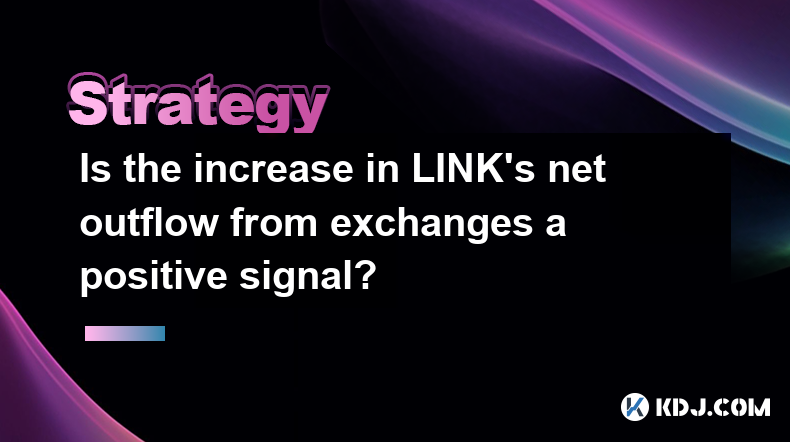
Is the increase in LINK's net outflow from exchanges a positive signal?
Apr 24,2025 at 02:35pm
The recent increase in LINK's net outflow from exchanges has sparked discussions within the cryptocurrency community about its implications for the token's future performance. LINK, the native token of the Chainlink decentralized oracle network, has seen a notable shift in its net outflow from exchanges, which many interpret as a positive signal. This a...
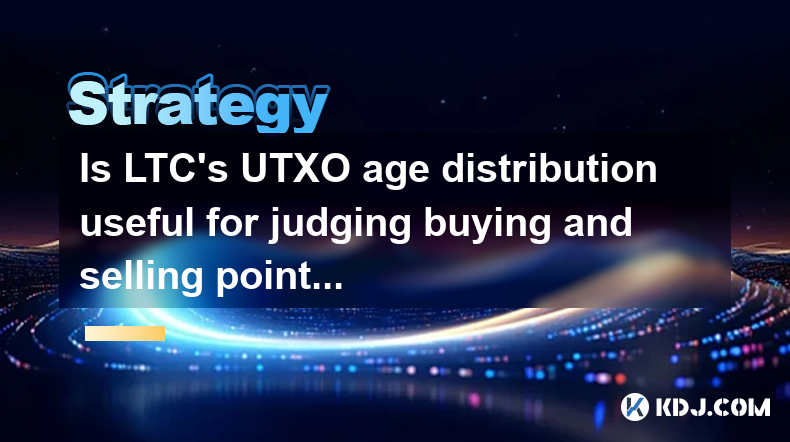
Is LTC's UTXO age distribution useful for judging buying and selling points?
Apr 23,2025 at 05:42pm
Is LTC's UTXO age distribution useful for judging buying and selling points? Understanding the UTXO (Unspent Transaction Output) age distribution of Litecoin (LTC) can provide valuable insights into the behavior of its holders and potentially help in making informed decisions about buying and selling points. The UTXO age distribution refers to the age o...
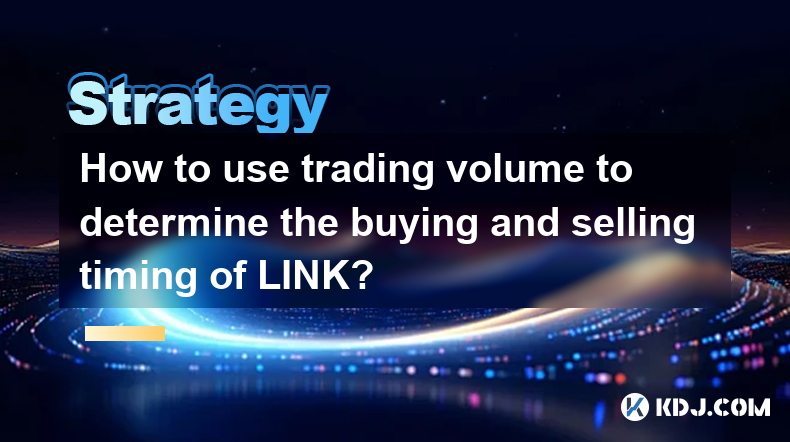
How to use trading volume to determine the buying and selling timing of LINK?
Apr 25,2025 at 02:07am
How to Use Trading Volume to Determine the Buying and Selling Timing of LINK? Trading volume is a crucial metric in the cryptocurrency market that can provide valuable insights into the buying and selling behavior of traders. When it comes to Chainlink (LINK), understanding how to analyze trading volume can help you make more informed decisions about wh...
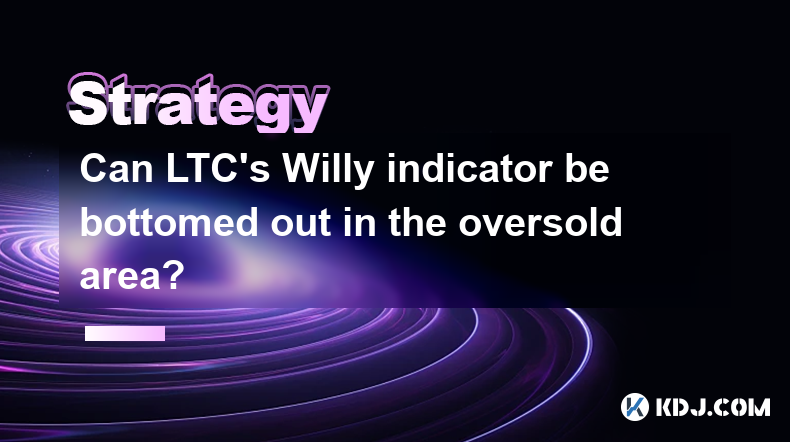
Can LTC's Willy indicator be bottomed out in the oversold area?
Apr 24,2025 at 01:43pm
Understanding the Willy IndicatorThe Willy indicator, also known as the Willy ratio, is a technical analysis tool used in the cryptocurrency market to gauge the sentiment of a particular asset, in this case, Litecoin (LTC). It is calculated by dividing the total trading volume of an asset by its market capitalization. The resulting ratio helps traders u...
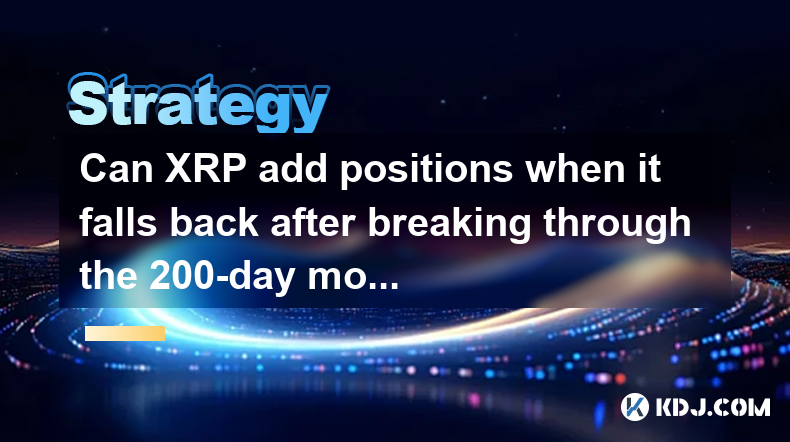
Can XRP add positions when it falls back after breaking through the 200-day moving average?
Apr 25,2025 at 04:49pm
The question of whether to add positions to XRP after it breaks through the 200-day moving average and subsequently falls back is a common dilemma faced by many cryptocurrency traders. The 200-day moving average is a widely recognized technical indicator used to assess the long-term trend of an asset. When XRP breaks above this level, it is often seen a...

What does the surge in SOL's cross-chain bridge inflows represent?
Apr 25,2025 at 09:00am
The recent surge in SOL's cross-chain bridge inflows represents a significant trend within the cryptocurrency ecosystem, particularly for Solana (SOL). This phenomenon highlights increased activity and interest in moving assets from other blockchains to Solana, indicating growing confidence in its network and ecosystem. Cross-chain bridges are essential...

Is the increase in LINK's net outflow from exchanges a positive signal?
Apr 24,2025 at 02:35pm
The recent increase in LINK's net outflow from exchanges has sparked discussions within the cryptocurrency community about its implications for the token's future performance. LINK, the native token of the Chainlink decentralized oracle network, has seen a notable shift in its net outflow from exchanges, which many interpret as a positive signal. This a...

Is LTC's UTXO age distribution useful for judging buying and selling points?
Apr 23,2025 at 05:42pm
Is LTC's UTXO age distribution useful for judging buying and selling points? Understanding the UTXO (Unspent Transaction Output) age distribution of Litecoin (LTC) can provide valuable insights into the behavior of its holders and potentially help in making informed decisions about buying and selling points. The UTXO age distribution refers to the age o...

How to use trading volume to determine the buying and selling timing of LINK?
Apr 25,2025 at 02:07am
How to Use Trading Volume to Determine the Buying and Selling Timing of LINK? Trading volume is a crucial metric in the cryptocurrency market that can provide valuable insights into the buying and selling behavior of traders. When it comes to Chainlink (LINK), understanding how to analyze trading volume can help you make more informed decisions about wh...

Can LTC's Willy indicator be bottomed out in the oversold area?
Apr 24,2025 at 01:43pm
Understanding the Willy IndicatorThe Willy indicator, also known as the Willy ratio, is a technical analysis tool used in the cryptocurrency market to gauge the sentiment of a particular asset, in this case, Litecoin (LTC). It is calculated by dividing the total trading volume of an asset by its market capitalization. The resulting ratio helps traders u...

Can XRP add positions when it falls back after breaking through the 200-day moving average?
Apr 25,2025 at 04:49pm
The question of whether to add positions to XRP after it breaks through the 200-day moving average and subsequently falls back is a common dilemma faced by many cryptocurrency traders. The 200-day moving average is a widely recognized technical indicator used to assess the long-term trend of an asset. When XRP breaks above this level, it is often seen a...
See all articles























































































